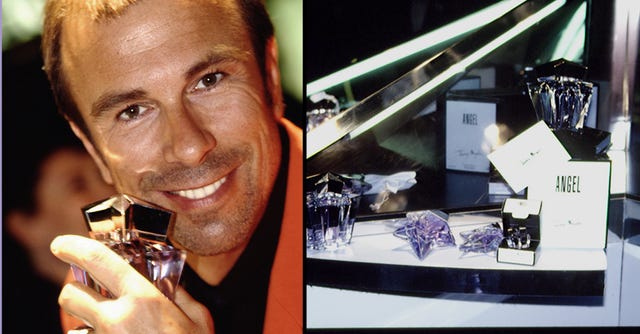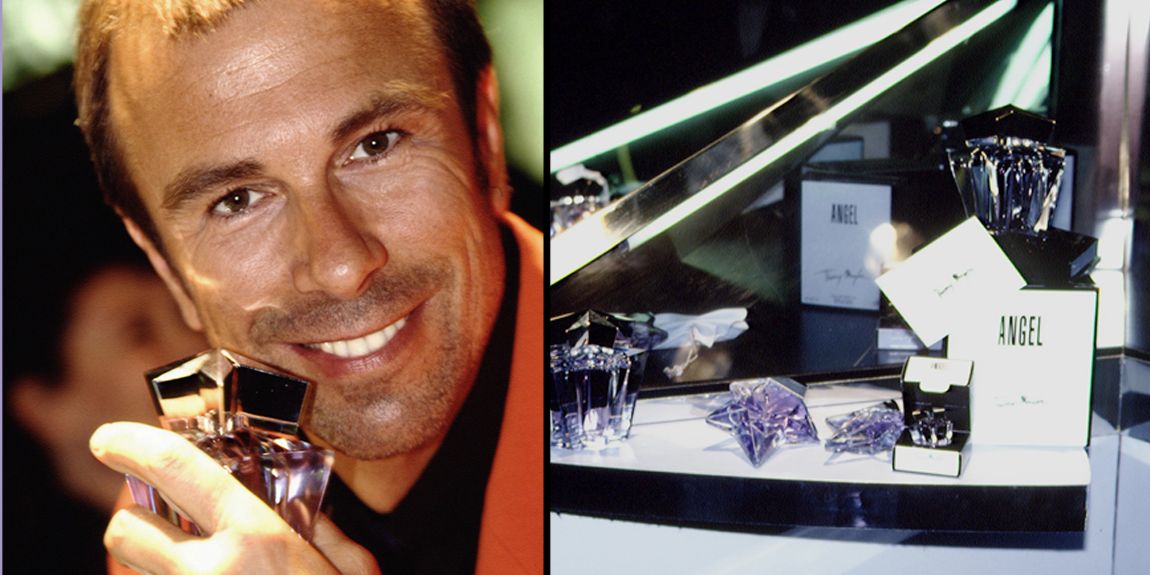
SERGII IAREMENKO/SCIENCE PHOTO LIBRARY
With the announcement of Thierry Mugler’s death yesterday at the age of 73, hundreds of stories about his impact on the fashion world hit the internet. But any beauty editor knows that Mugler completely revolutionized our world, too.
In 1992, the fashion designer entered the beauty industry with the launch of the brand’s first fragrance, Angel, a sugary-sexy blend of caramelized praline, chocolate, and patchouli.
Mugler collaborated with famed nose (and head of the Clarins empire) Jacques Courtin-Clarins to create a juice that mirrored his approach to fashion design—unexpected, toeing the line somewhere between vulgar and luxurious. And with its release, he did something else, too: invented the fragrance family now known as gourmand.
Angel was polarizing. It found fans in the expected (Diana Ross, Jerry Hall) and in the surprising, like Hilary Rodham Clinton and Barbara Walters. But the powerful scent, which was inspired by Mugler’s childhood memories of visiting the fair in France, became the ultimate “party” perfume of the 1990s.
Practically a decade later, Angel’s counterpart—Alien—was released with much the same fanfare. Since then, ancillary versions like Angel Muse, Angel Nova, and earlier this year, Alien Goddess have come onto the scene. Although Mugler retired in the early 2000s, the energy of his original brands was replicated by the house’s creative director Casey Cadwallader.
“The fragrance world is deeply saddened by the loss of Thierry Mugler. He was truly an extraordinary creative force and a one of a kind,” Linda G. Levy, president of The Fragrance Foundation, tells ELLE. “Mugler made history in fragrance and redefined the landscape of perfumes that will live on forever. We will miss him terribly, but his scents are eternal.”
Angel earned iconic status because it broke the fragrance rules. And it was truly an original—just like the designer.
This content is created and maintained by a third party, and imported onto this page to help users provide their email addresses. You may be able to find more information about this and similar content at piano.io
